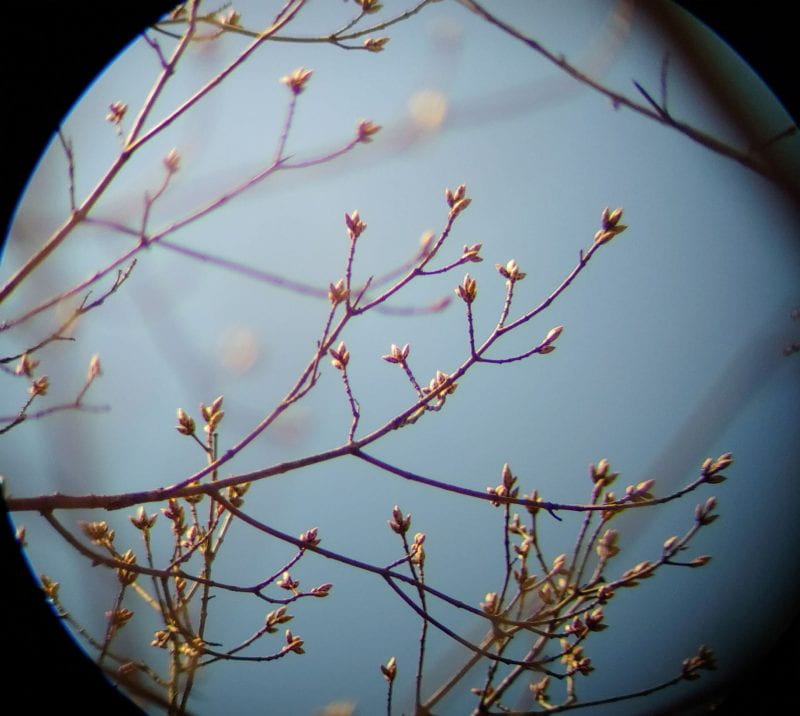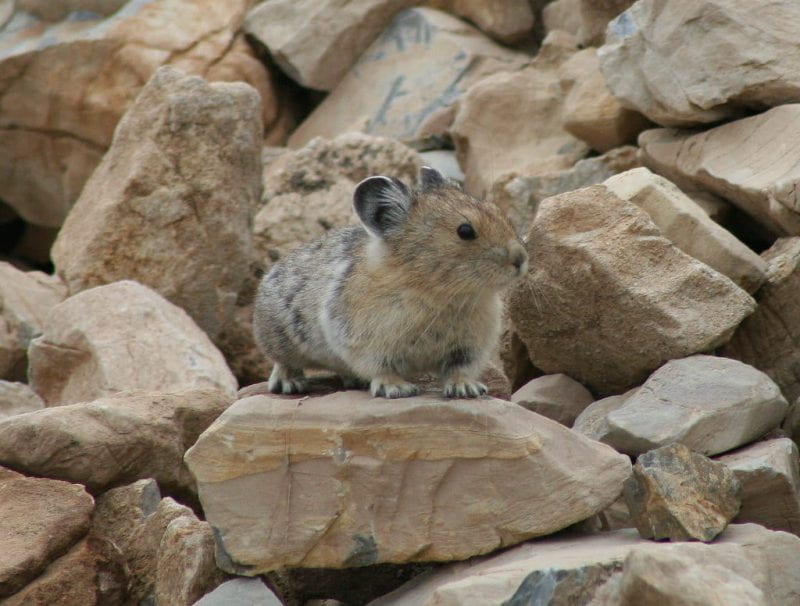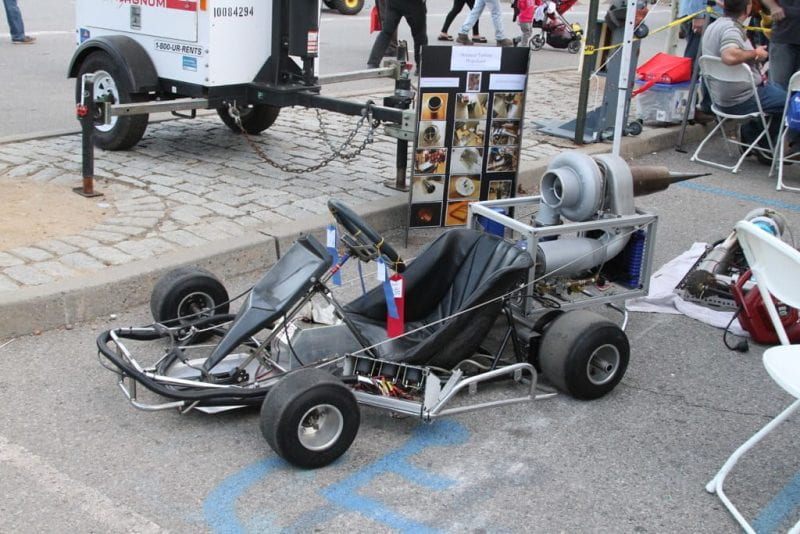A brief introduction to this new feature – Monthly Maple Review – we review a research article once each month to spotlight key findings, investigate curiosities, and uncover important implications for Ohio’s maple producers. Please comment below if you have thoughts, ideas, insights, or questions. And if you stumble on to a new maple article and want to see it highlighted in a Monthly Maple Review, please reach out to me via email – karns.36@osu.edu.
“Bud Break in Sugar Maple Submitted to Changing Conditions Simulating a Northward Migration” by Ping Ren and colleagues. This article was published in 2021 in the journal Canadian Journal of Forest Research.

In our first Monthly Maple Review, we looked at producer attitudes and behaviors regarding climate change and its projected impact on maple. For this our second installment, we focus on how a simulation experiment predicts climate change will effect bud break in sugar maples.
As climate shifts and range-restricting thresholds follow, plants and animals must adapt and keep up with changes or risk being left behind. Many organisms are well-suited, at least from a mobility standpoint, for keeping up – take birds and their gift of flight for instance. Other species likely face serious challenges; the American pika is commonly pointed to as an example. Pika are small, marmot- or groundhog-like creatures that live in treeless alpine habitat in the Rocky Mountains. It is easy to imagine pika being literally stranded on mountain peaks above timberline unable to migrate and keep up with shifts in suitable range. Many plants are also considered less adaptive to shifting conditions and may not be able to move into higher latitudes or elevations necessary to keep up with suitable growing conditions; sugar maples are no exception.

In emergency scenarios, assisted migration is a solution whereby humans literally help other organisms keep up with shifting climate conditions. Already, experiments have been conducted with many plant species, including some trees such as the whitebark pine, to verify suitability of growing conditions beyond the current limits of the species distribution. Will sugar maple or other maple species need a special assist from us? No one knows for sure, but studying what factors drive bud break is a small step to understanding if they are likely to need our help in the future.
The essence of Ping Ren and team’s experiment was to examine bud break under controlled conditions while varying temperature and photoperiod (also known as day length). The experiment’s most basic hypothesis was that “photoperiod outweights temperature in initiating bud break when the chilling requirement in unfulfilled.”

To understand the study’s results, we first need to wrap our minds around 3 main environmental factors, or signals – the variables we believe most plants are responding to when they wake from winter dormancy and start to stir towards bud break. First, winter chilling – more intense and longer periods of cold during the heart of winter contribute to chilling. This deep freeze is what resets the annual clock of trees and influences the trigger of growth reactivation. Perhaps it is worthwhile to think of chilling as similar to a human experiencing a prolonged session of deep sleep. Second, spring temperature – this is just what it sounds like. In a simple system, cooler spring temperatures may wake plants from deep sleep more slowly than a rapidly warming and sudden onset of spring (check out a series we did in winter 2022 on growing degree days to better under the role of spring temperature). And finally, photoperiod – more commonly known as day length. The most important thing to note on this final factor is that while any given year might vary in terms of winter chilling or spring temperature, length of day is fixed and will always be fixed regardless of where climate change takes us.
While each factor in isolation is relatively easy to understand, it is the complicated interactions between winter chilling, spring temperature, and photoperiod that likely determine the actual timing of bud break in a species. This study ran 2 experiments that essentially confirmed the hypothesis that sugar maple bud break is more determined by photoperiod than by spring temperature when the requirement for chilling is not met. Let’s put that another way – during winters that do not put sugar maples into a deep sleep for long enough (winter chilling), day length has more of an effect on bud break timing than how cool or warm spring temperatures are. In other words, the experiments confirmed the authors’ central hypothesis.

Let’s unpack that a bit more and talk about some take home messages.
Resetting a sugar maple’s internal clock is accomplished primarily by meeting the chilling requirement – being cold enough for long enough. When that chilling requirement is not met, it takes additional and louder signals to wake up a tree from dormancy to initiate bud break. While this might sound a bit counterintuitive, the fact is that waking up a tree from a deep sleep is easier and more predictable than trying to wake up a tree that has been tossing and turning in its winter bed. Under changing climatic conditions, warmer winters may result in unmet chilling requirements that ultimately result in delayed bud break thereby shortening growing seasons. But remember, winter chilling is just the first consideration. What about spring temperatures?
At face value, most sugarmakers understand the effect of a warm spring – trees break bud faster. In a cool spring, buds stay closed longer and the sap season might last a bit longer too. In a worst case scenario, climate change wreaks complete havoc on winter weather not allowing sugar maples to adequately chill and temperatures jump back to springtime highs so quickly that any sap season is effectively crowded right off the calendar. That’s where day length seems to play a crucial and important role.

Think of day length/photoperiod as a speed governor on a go-cart. I hate so-called governors growing up. I wanted to ride my go-cart at top and dangerous speeds, but my parents set the speed governor so that I could only drive certain speed limits. When spring temperatures warm abruptly and it seems that the sugar maples might break bud extraordinarily early, length of day pumps the brakes and slows down that process regulating it closer to normal. Essentially, photoperiod may be a crucial regulating factor to keep sugar maple bud phenology more on track than would be expected otherwise. In the authors’ own words – “Because day length will not change under climate warming, photoperiod becomes ultimately limiting when bud break in sugar maple occurs too early.”

So where does that leave us? Will sugar maple need our help in assisted migration as conditions change faster and faster into this and coming centuries? Time will tell, but if this study teaches you nothing else – you can certainly walk away with 2 big takeaways. First, trees are remarkably complex organisms. And second, trees have a few tricks up their sleeves!
















